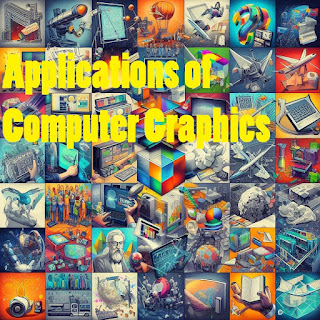In today's visually driven world, computer graphics (CG) has become an indispensable tool, seamlessly weaving its way into nearly every aspect of our lives. From the captivating visuals of blockbuster movies to the intuitive interfaces of our smartphones, CG has revolutionized the way we interact with technology and perceive the world around us. Let's delve into the diverse applications of CG and uncover its transformative impact on various industries.
1. Computer Aided Design (CAD):
- Computer Aided Design (CAD) is the use of computers to create, modify, analyze, and optimize a design. It typically involves creating 2D and 3D models of objects on a computer screen, allowing for a more efficient and precise design process compared to traditional manual methods.
2. Presentation Graphics:
- Presentation graphics are a specific sub-field of computer graphics concerned with creating visual aids and content to support presentations. They are used to communicate ideas, information, and data in a clear, engaging, and visually appealing way.
3. Computer Art:
- Computer art, also known as digital art, encompasses a vast and diverse range of artistic expressions created using computers or digital technologies. It's a fascinating field where technology intersects with creativity, pushing the boundaries of traditional art forms and exploring entirely new realms of artistic possibilities.
4. Entertainment:
Computer graphics have revolutionized the entertainment industry, weaving themselves into the fabric of countless experiences we enjoy. Here's a glimpse into how computer graphics entertain us:
Movies and Animation:
- Spectacular Effects: From epic explosions to fantastical creatures, computer graphics bring narratives to life, creating breathtaking scenes that were once limited to imagination.
- Animated Worlds: Entire films and TV shows are now created using animation, offering diverse stories and vibrant worlds impossible with traditional methods.
- Enhanced Storytelling: Subtle details like facial expressions and nuanced character animations enrich stories, drawing us deeper into the emotional journey.
5. Education and Training:
Computer graphics have become potent tools in education and training, transforming how we learn and retain information. Here's a glimpse into their diverse applications:
Engaging Visualizations:
- Complex Concepts Simplified: From the inner workings of cells to the vastness of galaxies, computer graphics allow us to visualize abstract and intricate concepts in a clear and engaging way.
- Interactive Learning: 3D models, simulations, and augmented reality experiences enable users to manipulate and explore information, solidifying understanding and sparking curiosity.
- Data Storytelling: Complex data sets are transformed into compelling narratives with the help of visualizations,
- Used to represent complex data in a visually understandable way, across science, engineering, and more.
- Features: Scientific visualization tools for depicting data sets, information visualization for conveying complex data relationships, interactive visualizations for exploration and analysis.
7. Graphical User Interface (GUI):
- The visual elements and controls we interact with on computers and mobile devices.
- Features: Intuitive icons and menus, user-friendly layouts, animations for feedback, touch-based interactions.




0 Comments